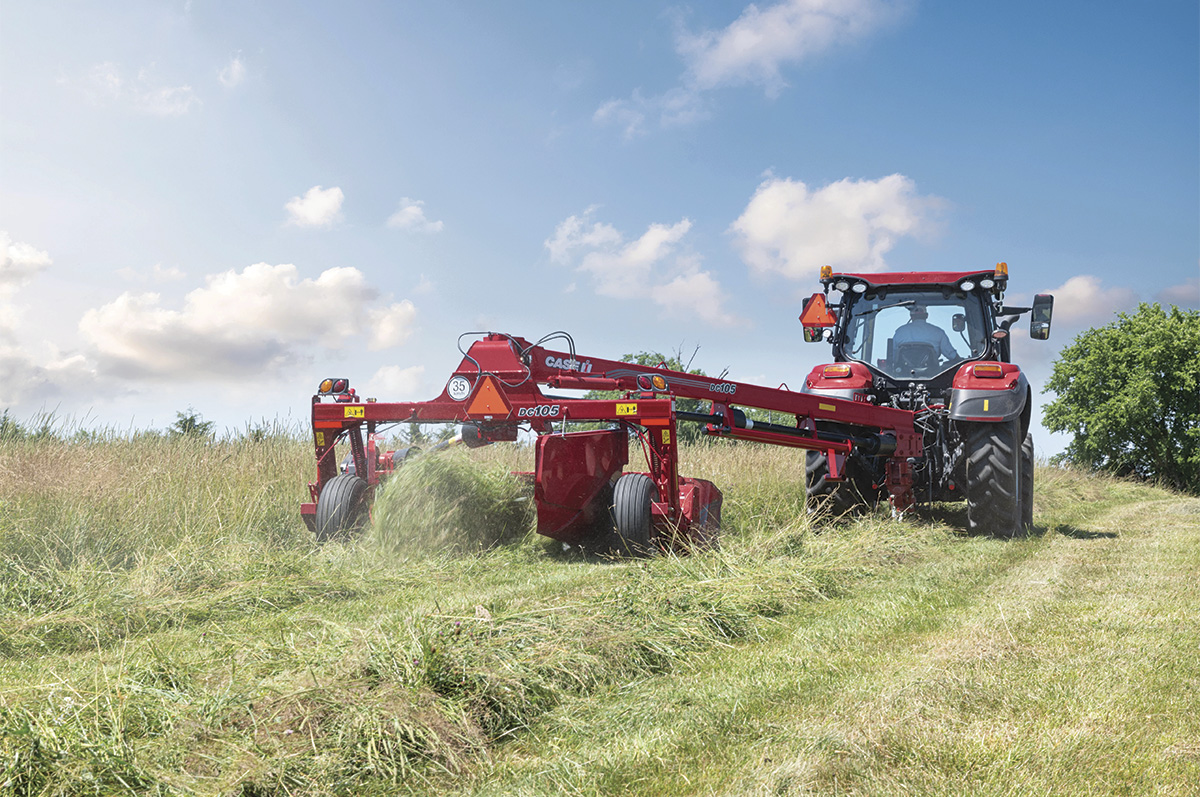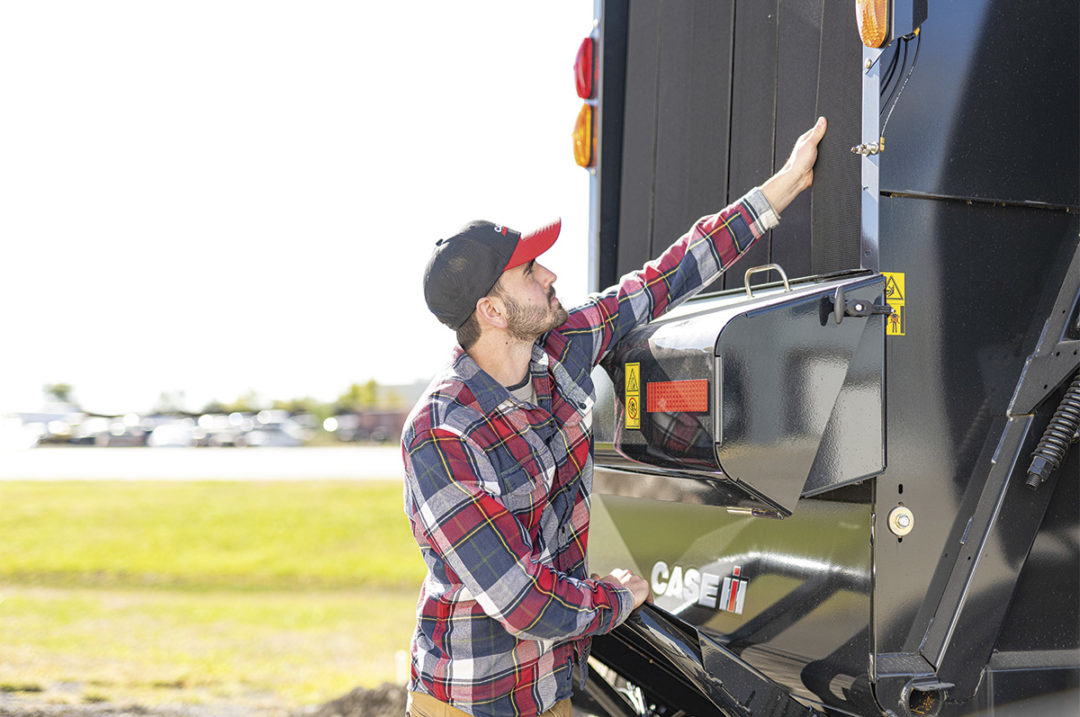As summer approaches, farmers and ranchers across the country are gearing up for the hay season ahead. Amid the anticipation of warmer weather and bustling fields, ensuring hay equipment is in optimal condition becomes a priority on the long to-do list for your farm. From thorough inspections to routine maintenance, equipment calibration and more, read on to find practical tips and tricks to help you prepare your equipment for a productive hay season.
Conduct a thorough inspection
One of the fundamental steps in preseason hay equipment maintenance is conducting a thorough inspection. Before the season kicks into full gear, it is crucial to carefully inspect every component of your hay equipment lineup, including tractors, mowers, rakes, balers and any self-propelled equipment you may have. Hopefully, you cleaned up and repaired equipment before winter storage to expedite maintenance this year, but if not, this is the time to inspect for any issues or damage created during last hay season. This inspection should encompass a detailed examination of bearings, belts, blades and hydraulic systems, checking for any signs of wear and tear or potential issues. By identifying and addressing these issues early on, you can prevent costly breakdowns or downtime when the weather is right.
Routine maintenance
Preseason is also the best time to ensure any parts or components needing repair are given attention to help prevent downtime and delays during the busy season. Following a thorough inspection, prioritizing routine maintenance is essential to keep hay equipment operating smoothly. Adhering to manufacturer-recommended maintenance schedules is important, and regular servicing is key to ensuring peak performance and maximizing the longevity of your machinery. You should refer to the equipment’s operator’s manual to ensure optimal upkeep, including lubrication of moving parts, changing fluids and filters, checking tire pressure, adjusting pickup heights and checking hoses. By staying proactive with maintenance, you can not only prevent unexpected repairs but also optimize the efficiency and reliability of your equipment.
Equipment calibration
Calibrating and adjusting equipment is another critical step in preparation for the hay season to achieve a consistent cut and uniform bales. This may involve setting the cutting height on mowers, adjusting the tension on balers or fine-tuning rake settings. Whether it's balers, mowers, rakes or other machinery, ensuring accurate operation is important for achieving good hay quality and minimizing wasted hay left in the field. You should refer to equipment manuals for calibration and adjustment procedures or seek assistance from the service experts at your local dealers to ensure precise calibration of hay machinery.
Equipment safety
Safety should always be a top priority. In addition to mechanical readiness, safety considerations should never be overlooked when preparing hay equipment for the season. Before the season begins, inspect safety features such as lights, guards, shields, fire or water extinguishers and emergency stop mechanisms. Ensure they are functioning correctly to protect both operators and bystanders. Also consider providing regular safety reminders for your employed operators and implementing best practices to help mitigate risks and prevent accidents in the field.

Ensuring accurate operation is important for achieving good hay quality and minimizing wasted hay left in the field. Photo courtesy of Case IH Parts and Service.
Field walk-through
Walking or driving through hayfields is another preparation step that can save equipment from damage or unwanted downtime. Now is the time to remove any large tree limbs or other debris that may have collected over the winter months. This field walk-through could also double as a time to inspect fences and gates to ensure neighboring livestock don’t pay a visit to the growing hay crop. Ensuring your fields are free and clear of hazardous material will protect your equipment from unnecessary wear and tear or possible large-scale damage.
Proper storage
Proper storage practices are also essential for preserving the condition of hay equipment while waiting for hay season to arrive and when not in use throughout the summer. Protect machinery from the elements to prolong their lifespan, and store them in a clean, dry environment away from moisture, sunlight and extreme temperatures that could cause corrosion and damage. Invest in covers or sheds to provide an additional layer of protection, ensuring that equipment remains in optimal condition between uses.
Adding or upgrading technology
Staying informed about technological advancements in hay equipment is another aspect of preparation for the hay harvest season. Visiting local equipment dealers can help you see and understand what new innovations and products could help increase the efficiency of your operation. Features such as precision farming, automated controls and data monitoring offer opportunities to enhance productivity on the farm, while products such as hay preservatives could maximize your time in the field and tonnage harvested during the day.
Contingency plans
Despite adequate preparation, unforeseen challenges may arise during the hay season. Developing contingency plans for unexpected breakdowns or adverse weather conditions is advised to maintain operational continuity, and having backup solutions ready ensures a smooth hay harvest. Stock your shop or field truck with tools and replacement parts such as blades, bearings, rake teeth and pickup tines and bands to save you time when the weather is right and your time is best spent in the field.
Preparing hay equipment for the season requires careful attention to detail, but proactive maintenance is worth the time saved in the fields during harvest. By following these tips, you can ensure your hay equipment is ready to tackle the long days of hay season. Remember to lean on your local equipment dealer for the parts and service advice you need to set the stage for a successful hay season and to keep you in the field when it matters most.










